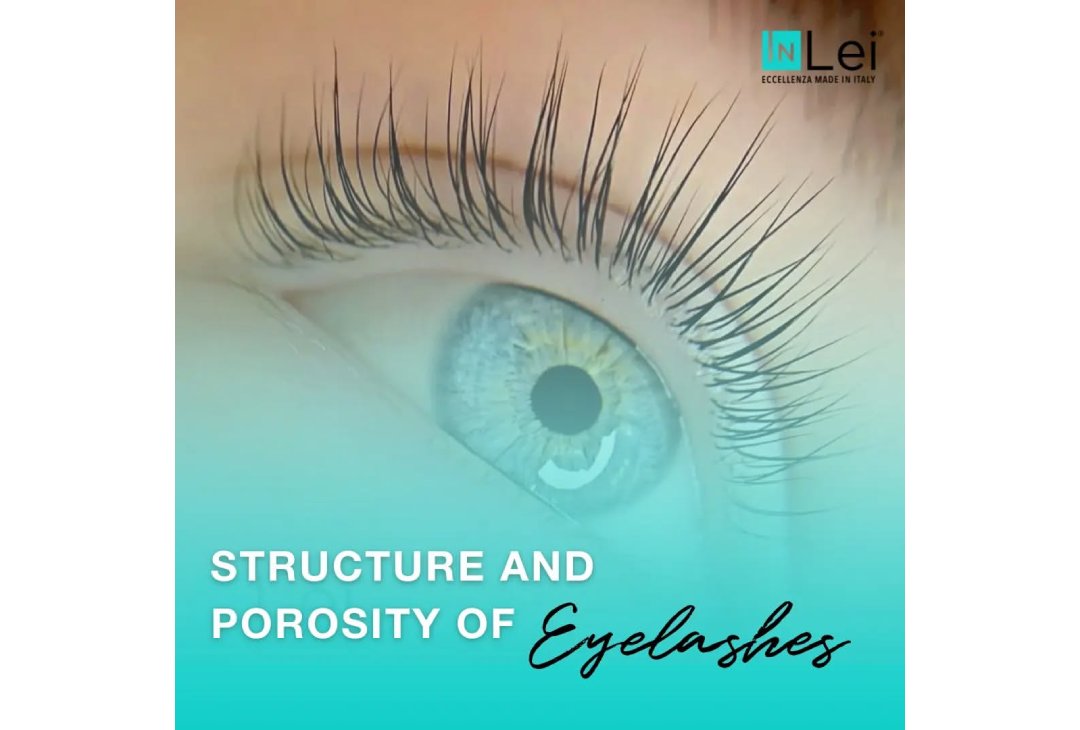How often do you find yourself questioning the processing times for InLei® Lash Filler treatments? Have you ever doubted whether the exposure time is too long or not enough?
Today, we clarify this important topic. To understand how chemical reactions work in lash perming or tinting, two main factors must be considered:
-
The structure of the hair
-
The porosity of the hair
Porosity of Hair: What It Is and How to Recognize It
First of all, the shiny or matte appearance of the hair depends on its porosity. Porosity refers to the hair's ability to absorb moisture and can be classified as low, medium, or high.
To determine which category the lashes you are treating fall into, observe the cuticle. If you don’t have a microscope available, you can assess absorption capacity instead.
Here’s what happens with different hair types:
-
Low porosity (low absorption capacity) – The cuticle scales adhere tightly, making the hair very shiny, like the glossy hair seen in advertisements. This structure makes it difficult for chemicals to penetrate, requiring longer processing times for both perming and tinting.
-
Medium porosity – The most common type of hair. Cuticle scales are slightly lifted or thin, or the cuticle layers are fewer due to ethnicity. These lashes are generally easy to work with.
-
High porosity (high absorption capacity) – The cuticle scales are lifted (weak) or porous, which prevents moisture from remaining in the hair for long periods. The hair absorbs products rapidly, often appearing fragile and dull. This type is typically damaged but can also include many naturally curly lashes. During processing with Lash Form 1, you may notice that this type of hair “devours” the solution, changing it from bright white to a milky translucent color.
Summary:
-
Shiny hair = low porosity = longer processing time
-
Matte hair = high porosity = shorter processing time due to faster absorption
Eyelash Structure
Porosity is closely linked to elasticity, as moisture retention ensures keratin remains flexible, particularly at the root.
We categorize eyelash structure into three types:
-
Soft hair – Often very compliant when placed on the rod, but sometimes can be unpredictable. In certain cases, the hair is so soft and flexible that it creates “waves” that are difficult to straighten. These lashes rarely lift from the rod during processing with the first solution.
-
Medium hair – Obedient and easy to place on the rod, usually corresponding to medium porosity. Occasionally, some lashes might lift during the processing time, requiring repositioning using the “spiderweb” method.
-
Stiff and coarse hair – Resistant to curling on the rod, requiring a strong adhesive. This type is often referred to as “glassy” lashes due to its glossy surface, which results from tightly closed cuticles. These lashes often have low porosity, making them challenging to process. Without enough adhesive, many will lift during Form 1 processing.
Important Reminder:
These characteristics are independent of hair diameter—very fine hair can be stiff, and thick hair can be soft.
Processing Times for InLei® Lash Form 1
The following table provides recommended exposure times, considering both porosity and hair structure. However, always remember that exceptions exist.
Exceptions to the Rule
-
Fine, low-porosity hair – Appears soft but is actually medium-rigid to the touch. Suggested processing time: 10–14 minutes (visually, you might have chosen only 6 minutes!).
-
Fine, low-porosity hair – Seems soft but often resists placement on the rod.
-
Red-haired individuals – Many have lashes with low absorption capacity. Regardless of structure (soft or rigid), processing time should increase by 1 minute compared to standard recommendations.
-
Italian lashes – Appear soft visually and by touch but tend to be rebellious during placement. Under light, they display a “glassy effect”, meaning their cuticle is very closed. You might assume medium porosity (9 minutes), but in reality, they are medium-rigid/rigid with low porosity. Recommended time: 13 minutes.

Improve Your Technique and Become a Lash Filler Expert!
In today’s beauty industry, what truly matters is being the go-to professional—the one who makes a difference! To stand out in the eyelash sector, precision and expertise are essential. Clients immediately recognize the difference between a mediocre treatment and a flawless one, just as they can distinguish between an expert and someone with limited knowledge.
Furthermore, technical or chemical errors can pose serious risks. Eyelash perming, if done incorrectly, can lead to serious consequences. Incorrect processing times can burn a client’s lashes, while improper product use can cause severe eye irritation.
Why take the risk? If you want to become a successful lamimaker, we recommend enrolling in the Lash Filler 25.9 course, available at My Absolute Beauty!


